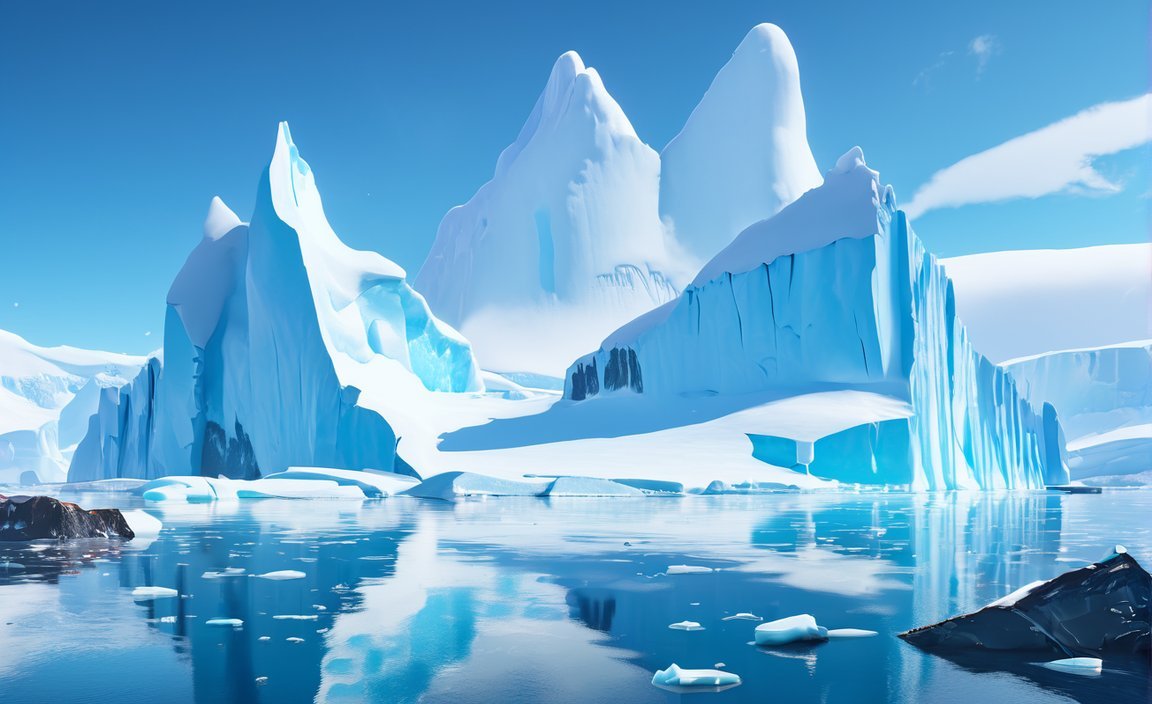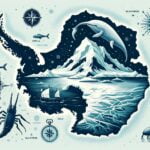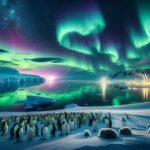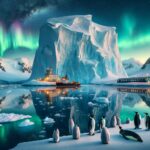Embark on a thrilling journey to the mesmerizing world of Antarctica, as we unveil captivating secrets in our article, The Enigmatic Wonders of Antarctica: Uncovering Fascinating Facts. Delve into the intriguing realm of this frozen continent and get ready to be astounded by an array of interesting and lesser-known tidbits about its unique geography, astonishing wildlife, and unforgiving climate. Join us as we unravel the mysteries of Antarctica, guaranteeing an unforgettable reading experience filled with awe and wonder.
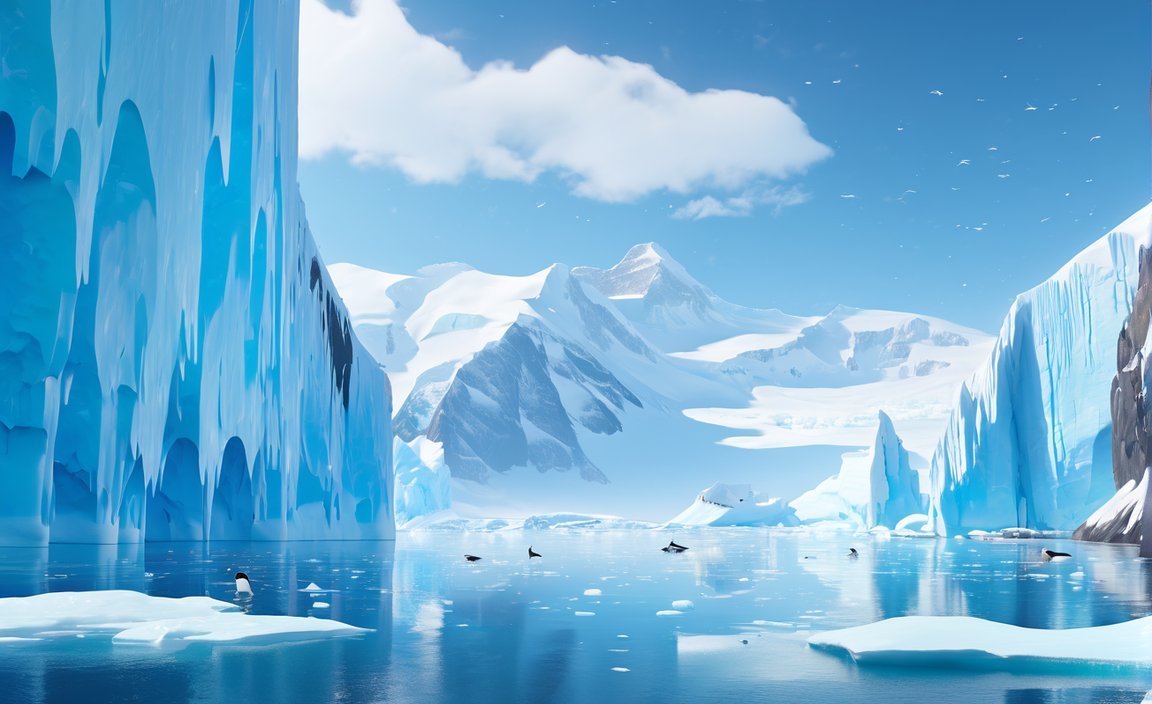
Key Takeaways:
- Antarctica is the highest, driest, coldest, and windiest continent on Earth.
- It covers 14.2 million square kilometers and expands to twice its size in winter.
- Antarctica contains about 90% of the world’s ice and about 70% of the world’s fresh water.
- It has a ghost mountain range, a landmass deeper than the Grand Canyon, and a lake under the ice.
- Antarctica has one sunrise and one sunset a year at the South Pole and no official time zone.
- It has no capital city, official language, or country ownership.
- Antarctica is the fifth largest continent in the world and is double the size of Australia.
- It is home to unique wildlife such as penguins, seals, whales, and tardigrades that have adapted to the harsh conditions.
- The continent has no permanent residents but hosts scientists and tourists who need to remove their wisdom teeth and appendix before working there.
- Antarctica is the windiest place on earth, with gusts reaching over 200 mph, and the coldest, with a record low of -89.2°C.
- The coldest temperature ever recorded on Earth was minus 128.56 degrees Fahrenheit (minus 89.2 degrees Celsius) at Antarctica’s Vostok station.
Interesting Facts About Antarctica: Unveiling the Enigmatic Wonders
Antarctica: Nature’s Frozen Extravaganza
The staggering allure of Antarctica lies in its extraordinary and awe-inspiring mysteries. As a seasoned traveler, I have embarked on numerous expeditions to this frozen continent, peeling back the layers of its captivating secrets. Today, I invite you to embark on a journey of discovery with me as we uncover some of the most intriguing and lesser-known facts about Antarctica.
A Land of Extremes
Antarctica, without a doubt, is a land of superlatives. It holds the title for being the highest, driest, coldest, and windiest continent on Earth. Can you imagine a place where winds can gust over 200 mph and temperatures can plummet to a record low of -89.2°C? Antarctica’s hostile climate sets the stage for an environment like no other.
Size Matters: Beyond Imagination
Covering a whopping 14.2 million square kilometers (5.5 million square miles), Antarctica expands to twice its size during winter, making it the fifth largest continent on our planet. To put it into perspective, it is double the size of Australia – a staggering landmass of frozen enchantment, waiting to be explored.
An Icy Dominion: Nature’s Water Reservoir
Antarctica reigns as the custodian of our planet’s water supply. In this frozen wonderland, around 90% of the world’s ice is stored, along with 70% of its freshwater reserves. While ghost mountain ranges hide beneath the ice, a mesmerizing lake lies hidden, concealed from the world’s gaze. Such abundance and majesty make Antarctica’s water resources invaluable and vital to the Earth’s delicate ecosystem.
Time Stands Still: Sunrises and Time Zones
At the South Pole, time has a different rhythm. Here, the year unfolds with a solitary sunrise and a solitary sunset. With only one sunrise and one sunset annually, the passage of time feels different amidst the icy expanses of Antarctica. Interestingly, this unique landmass does not adhere to any official time zone, truly standing apart from the rest of the world.
A Land Without Borders
Unlike the nations of the world, Antarctica has no country ownership, capital city, or official language. It stands as a global treasure, a continent destined to be a sanctuary for scientific research and exploration. In this vast and untouched wilderness, humanity comes together, united in the pursuit of knowledge and understanding.
Marvels of Wildlife: A Symphony of Adaptation
Beyond its frozen facade, Antarctica teems with life – against all odds. Penguins, seals, whales, and resilient tardigrades call this icy landscape their home, defying the extremities of its climate. These remarkable creatures have evolved and adapted to face the challenges of this unique environment, creating a mesmerizing symphony of survival against all odds.
Exploring Antarctica’s Indomitable Realm
With its intriguing nuances and unparalleled wonders, Antarctica has captured the hearts of adventurers and scientists alike. From its ethereal vastness to its diverse wildlife, this frozen continent stands as a testament to nature’s resilience and beauty. Join me, as we continue to unravel the enigmatic mysteries hidden within the depths of Antarctica, ensuring that its legacy lives on for generations to come.
References:
- Aurora Expeditions – 10 Fun Facts about Antarctica
- Atlas & Boots – 20 Interesting Facts about Antarctica
Here are some fascinating internal links that will take you to intriguing information on various topics:
- Fun facts on silver – Discover interesting and captivating trivia about this shiny element that you may not have known before.
- Facts about Vatican City – Unearth captivating details about the smallest independent state in the world, where history and spirituality converge.
- Fun facts about Serbia – Embark on a journey through this vibrant country’s rich culture and remarkable traditions with these captivating facts.
- Fascinating facts of India – Immerse yourself in the wonders of India as you explore its awe-inspiring heritage, diverse landscapes, and intriguing facts.
- Facts on Albania – Delve into the lesser-known aspects of this beautiful Balkan nation, from its stunning landscapes to its fascinating history.
Feel free to click on any of the links above to satisfy your curiosity and expand your knowledge on these captivating topics!
Antarctica has no permanent human population.
Antarctica, the enigmatic frozen continent at the bottom of the world, is a place of untamed beauty and extreme conditions. It is a land shrouded in mystery, captivating the imagination of adventurers and scientists alike. One of the most intriguing aspects of Antarctica is its lack of a permanent human population. This vast icy wilderness remains uninhabited by indigenous peoples throughout history due to its harsh climate and isolation from the rest of the world.
Antarctica’s Uninhabited Expanse:
The inhospitable environment of Antarctica, characterized by relentless cold and formidable ice, presents insurmountable challenges for human settlement. With temperatures plunging to mind-numbing lows, Antarctica holds the record for the lowest natural temperature ever recorded on Earth, a bone-chilling -128.6°F (-89.2°C) at the Soviet Union Vostok Station in 1983.
Although there are permanent human settlements in Antarctica, these are research stations where scientists and support staff live for part of the year on a rotating basis. These settlements serve as hubs for scientific research and logistic support, providing temporary shelter and facilities necessary to carry out vital scientific studies. However, the absence of a permanent human population in Antarctica is a testament to the inhospitable nature of this vast white continent.
A Continent Unclaimed:
Unlike other continents with distinct nations and borders, Antarctica has no permanent human habitation and no official sovereign ownership. Prior to the signing of the Antarctic Treaty in 1959, seven countries made defined claims to Antarctic territory. However, the treaty established Antarctica as a scientific preserve, keeping it free from any military activity and designating it as a place for peaceful scientific cooperation.
The Wildlife Haven:
While humans may not call Antarctica home on a permanent basis, this frozen realm is teeming with diverse and remarkable wildlife. Penguins, seals, whales, and various bird species have adapted to the extreme conditions of Antarctica, carving out a niche for themselves in this frozen wilderness. From the iconic emperor penguins waddling across the ice to the majestic humpback whales breaching the icy waters, Antarctica’s wildlife adds a touch of enchantment to this isolated continent.
Preserving Antarctica’s Fragile Beauty:
Antarctica’s isolation and fragile ecosystem necessitate the implementation of strict regulations and permits for those venturing to its shores. Organized tours and expeditions facilitate the exploration of Antarctica, but they operate under the watchful eye of conservation authorities to protect the delicate environment. These measures ensure that future generations can experience the awe-inspiring vistas and unique wildlife that Antarctica has to offer.
Key Takeaways:
– Antarctica has no native human population and has never had an indigenous human population due to its inhospitable climate and isolation from the rest of the world.
– While there are permanent human settlements in Antarctica for scientific research, it remains uninhabited on a permanent basis.
– Antarctica holds the record for the lowest natural temperature ever recorded on Earth, reaching a bone-chilling -128.6°F (-89.2°C) in 1983.
– Antarctica does not have any official sovereign ownership, with the signing of the Antarctic Treaty in 1959 preserving it as a scientific preserve for peaceful scientific cooperation.
– Antarctica boasts a diverse range of wildlife, including penguins, seals, whales, and various bird species, which have adapted to survive in this harsh environment.
– Strict regulations and permits are in place to protect Antarctica’s fragile environment, ensuring that future generations can enjoy its unique beauty and wildlife.
Sources:
1. National Geographic Society. “Antarctica.”
2. WorldAtlas. “Do People Live In Antarctica?”
Antarctica Contains About 70% of the Earth’s Fresh Water
Antarctica, the enigmatic frozen continent situated at the southernmost tip of the world, holds many captivating secrets. From its unique geography and wildlife to its extreme climate, Antarctica is a place of awe-inspiring wonders that continue to captivate explorers and researchers alike. One little-known fact about Antarctica is that it contains about 70% of the Earth’s fresh water, making it a vital resource for our planet’s survival.
The Frozen Reservoir of Freshwater
Antarctica is home to the largest ice sheet on Earth, covering an area of 13.66 million square kilometers. This vast expanse of ice contains an astonishing amount of freshwater, accounting for approximately 70% of the world’s freshwater reserves. If the ice sheets covering Antarctica were to melt entirely, global sea levels would rise by almost 70 meters, posing a severe threat to coastal areas and ecosystems around the world.
A Precious Resource
The presence of this immense freshwater reserve in Antarctica is of great significance. It serves as a vital resource for sustaining life on our planet, as freshwater is essential for millions of species and human populations worldwide. While access to freshwater is often taken for granted in many regions, the importance of preserving and using this resource responsibly becomes even more critical when considering Antarctica’s contribution to the Earth’s fresh water supply.
The Secret Behind Antarctica’s Water Density
The thin layer of sea ice that forms around Antarctica during the winter plays a crucial role in creating the densest water mass in the ocean. As the sea ice freezes, it extracts salt from the surrounding seawater, increasing its salinity. The saltier and colder the water becomes, the denser it gets. This dense water then sinks to the bottom of the ocean, driving important ocean currents that circulate heat and nutrients around the globe. Antarctica’s role as a contributor to the Earth’s water density highlights its significance in maintaining the delicate balance of our planet’s climate system.
Diving into the Depths
Not only does Antarctica contain a substantial amount of freshwater, but it also holds impressive records for its ice depths. The inland ice sheet of Antarctica reaches a staggering depth of 4,776 meters, with an average thickness of 2,160 meters. This vast ice mass contributes to the stability of Earth’s climate, acting as a natural thermostat that regulates global temperatures.
Antarctica: More Than Meets the Eye
While often associated with extreme cold and desolation, Antarctica is a land of immense beauty and biodiversity. It is home to seven species of penguins and six different species of seals, including the majestic emperor penguins and the playful Weddell seals. These unique species have adapted to the harsh Antarctic environment, showcasing nature’s incredible resilience.
Antarctica’s secrets are not limited to its icy landscapes and diverse wildlife. The continent’s mysteries extend below its frozen surface to the depths of its oceans. The surrounding oceans play a crucial role in the physical characteristics of the Antarctic region, interacting with the ice sheets and influencing climate patterns worldwide.
Key Takeaways:
- Antarctica contains approximately 70% of the Earth’s freshwater reserves, making it a vital resource for our planet.
- The melting of Antarctica’s ice sheets would cause a significant rise in global sea levels, posing threats to coastal areas and ecosystems.
- Antarctica contributes to the Earth’s water density through the formation of dense, salty water masses around its sea ice.
- The inland ice sheet of Antarctica reaches impressive depths, with an average thickness of 2,160 meters.
- Antarctica is home to a diverse range of wildlife, including penguins and seals, showcasing nature’s adaptability to extreme environments.
Sources:
– AMNH – Some Background on Antarctica | AMNH (source)
– Earth.Org – Antarctica | Earth.Org (source)
Antarctica is an important scientific research hub.
Antarctica, the enigmatic frozen continent at the bottom of the world, holds a significant role as an important scientific research hub. Its extreme conditions and pristine environment provide scientists with a unique opportunity to study various aspects of our planet. From climate change research to meteorite studies, Antarctica offers valuable insights into the workings of our planet. Here are some fascinating facts that highlight Antarctica’s importance as a scientific research hub:
1. A Wealth of Freshwater and Ice Reserves
With 90% of the world’s ice and 70% of the world’s freshwater reserves, Antarctica is the largest reservoir of freshwater on Earth[^1^]. This vast quantity of ice plays a pivotal role in regulating global climate and sea level fluctuations. Studying these ice reserves helps scientists understand the intricate dynamics of our planet’s climate system.
2. A Frozen Laboratory for Climate Research
The extreme cold and isolation of Antarctica make it an ideal location for climate research. The Antarctic ice sheet holds an extraordinary record of the planet’s climate over the past one million years[^6^]. By drilling deep into the ice, scientists can analyze ancient air bubbles and study changes in atmospheric composition and temperature variations. This invaluable data allows researchers to reconstruct past climate patterns and gain insights into the future.
3. Meteorite Preservation
Antarctica is a treasure trove for meteorite hunters. Over 10,000 meteorites have been discovered in Antarctica since 1970[^4^]. The unique ice sheet acts as a natural collector, preserving these extraterrestrial objects from erosion and degradation. Scientists can study these meteorites to understand the composition of the early solar system and gain insights into the formation and evolution of our universe.
4. Gateway to Understand Earth’s Evolution
Antarctica’s geological landscape provides a window into the Earth’s ancient history. The exposed rocks reveal evidence of past supercontinents, volcanic activity, and tectonic movements. By studying these geological formations, scientists can reconstruct the evolution of our planet and gain valuable insights into the mechanisms that shape the Earth’s surface.
5. A Biological Wonderland
Despite its harsh conditions, Antarctica teems with life. Its oceans support a rich variety of marine species, including plankton, fish, seals, whales, and penguins. These unique ecosystems contribute to our understanding of marine biodiversity and the adaptations of organisms to extreme environments. Studying Antarctic organisms may also hold crucial medical and technological discoveries, as they have evolved unique strategies to survive in these extreme conditions.
Key Takeaways:
- Antarctica holds about 70% of the world’s freshwater and 90% of its ice, making it a vital reservoir for climate research[^1^].
- The continent’s ice sheet provides an unparalleled record of the planet’s climate history over the past one million years, aiding scientists in understanding climate change[^6^].
- Meteorites found in Antarctica are well-preserved, offering valuable insights into the composition and evolution of the solar system[^4^].
- Antarctica’s geological formations unlock secrets about the Earth’s past, helping researchers reconstruct the planet’s history and evolution.
- The diverse marine ecosystems of Antarctica contribute to the understanding of biodiversity and the adaptations of organisms to extreme environments.
Sources:
[^1^]: Fact Retriever – “29 Interesting Antarctica Facts”
[^4^]: Directionally Challenged Traveler – “30+ Fun Facts About Antarctica”
[^6^]: British Antarctic Survey – “Why Antarctica Matters”
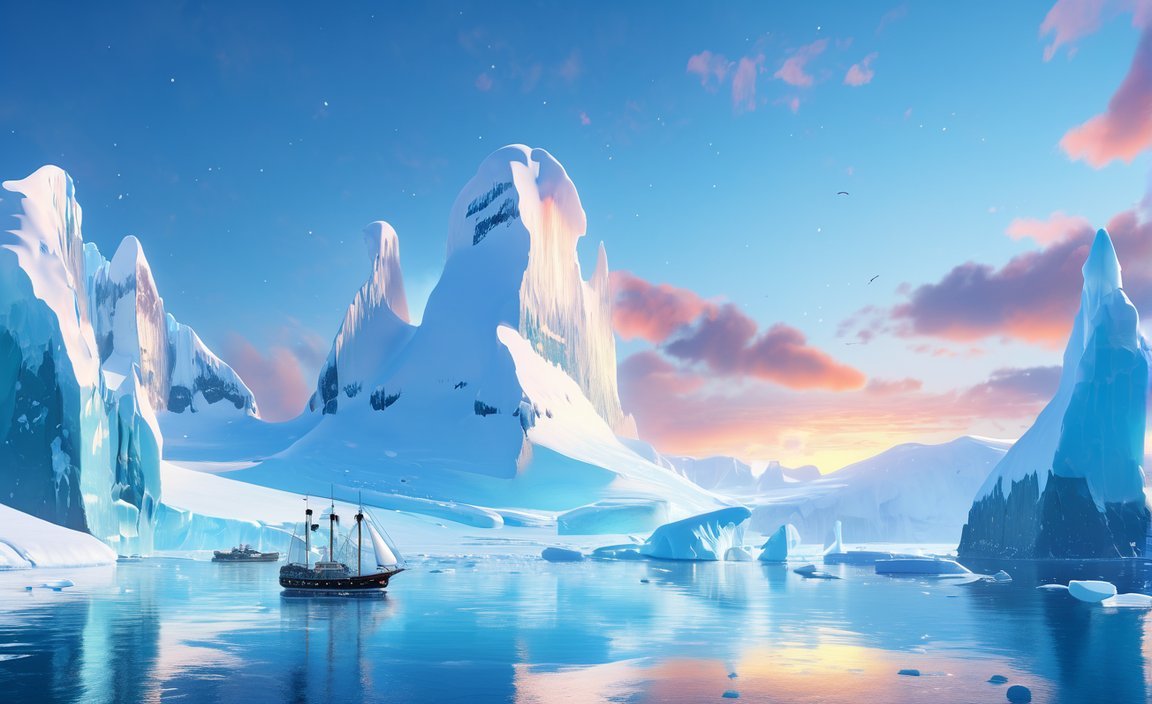
FAQ
Q1: What percentage of the world’s ice does Antarctica contain?
A1: Antarctica contains about 90% of the world’s ice[^1^].
Q2: How cold does it get in Antarctica?
A2: Antarctica is the coldest place on Earth, with temperatures as low as -128°F (-89.2°C)[^1^].
Q3: How big is Antarctica compared to other continents?
A3: Despite its extreme conditions, Antarctica is the fifth largest continent, double the size of Australia[^1^].
Q4: Are there any permanent residents in Antarctica?
A4: Antarctica is the only continent with no permanent residents or citizens. People living there, such as scientists, only stay for around three to six months for research purposes[^2^].
Q5: What is the significance of Antarctica for climate research?
A5: Antarctica’s ice sheet holds a unique record of what the planet’s climate was like over the past one million years, making it crucial for scientific research on climate change[^6^].
